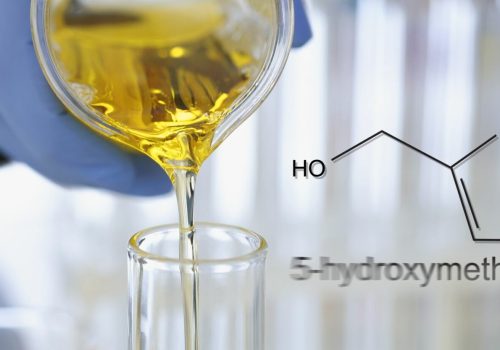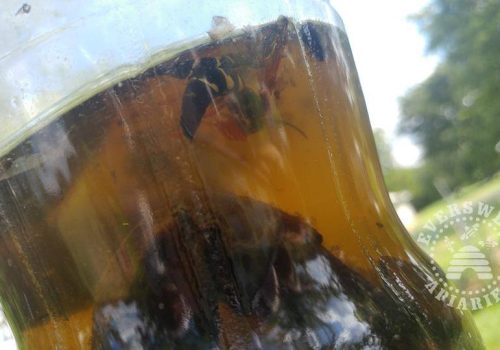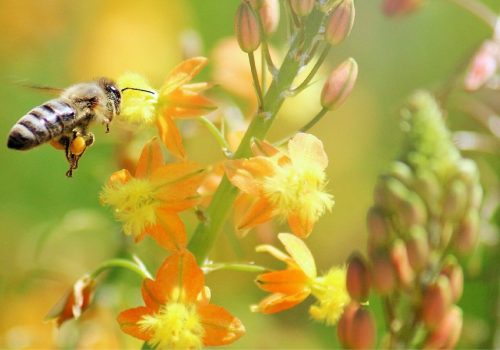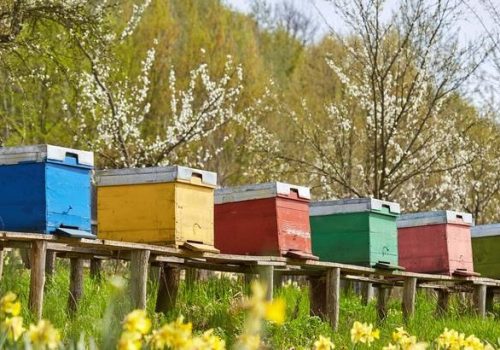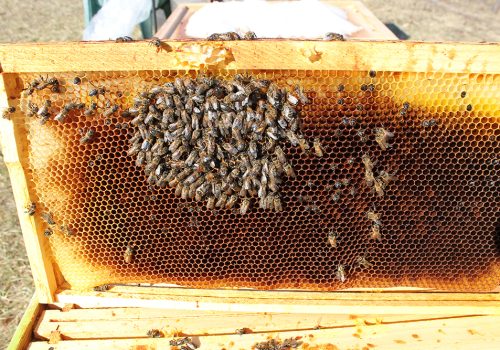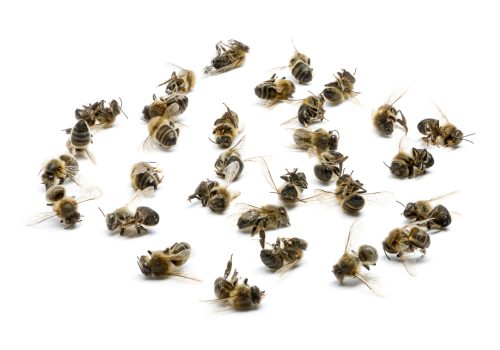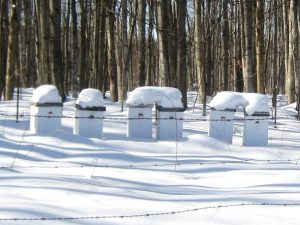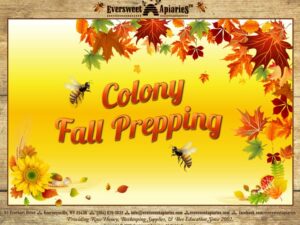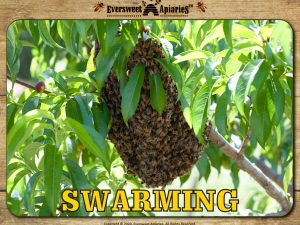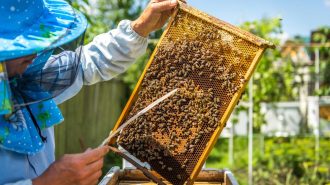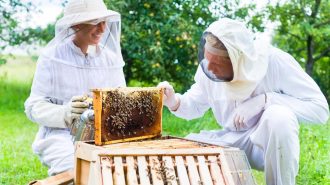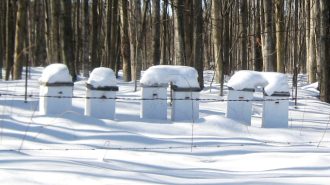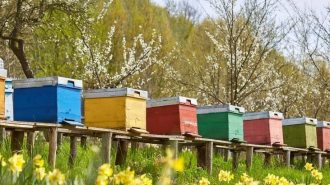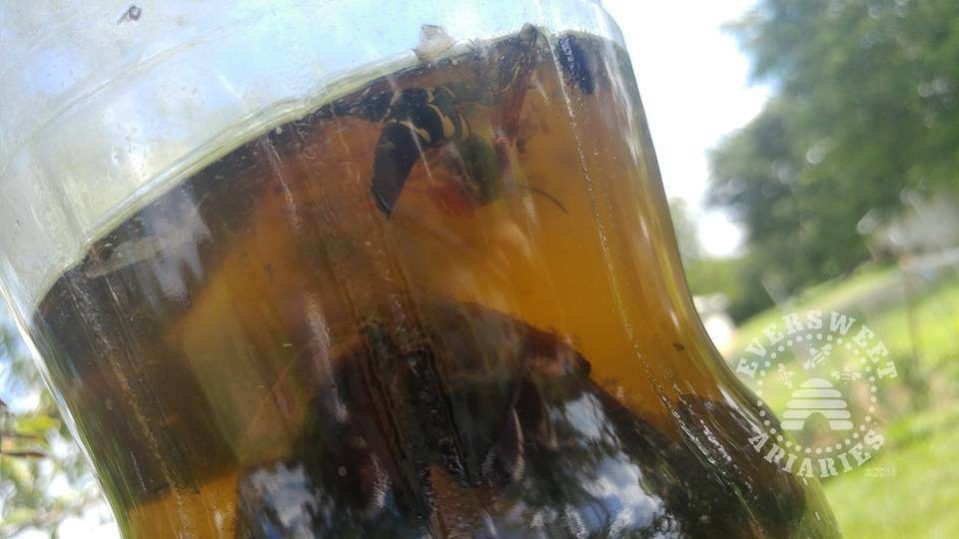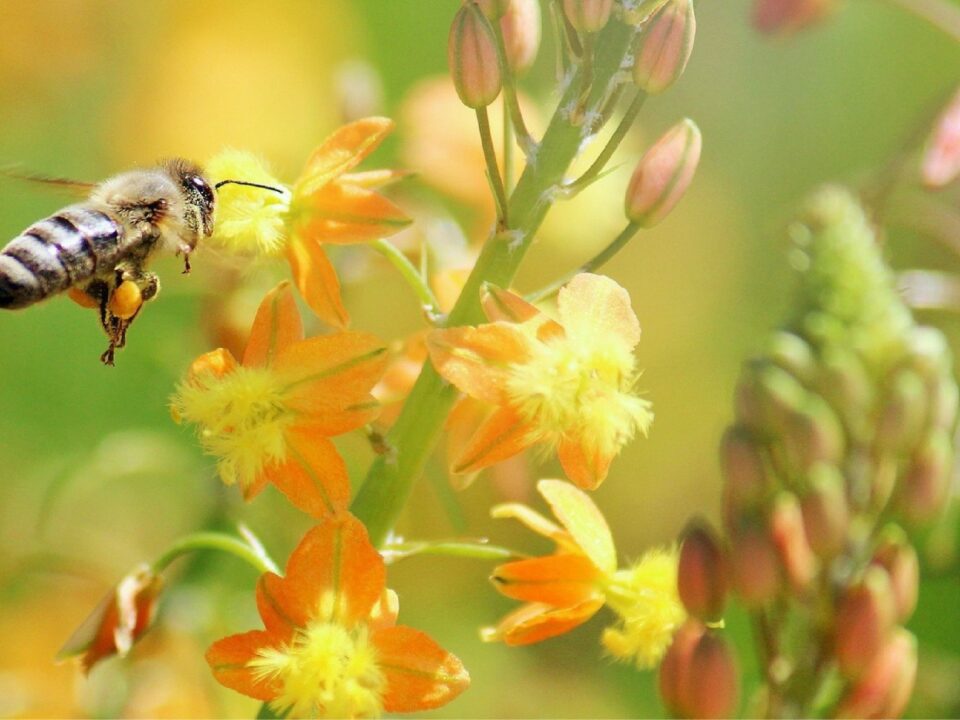
Jul.-Aug. Beekeeping Tasks

Jul.-Aug. Beekeeping Tasks
The Dangers of Feeding Off-Spec Syrups to Your Bees

The Dangers of Feeding Off-Spec Syrups to Your Bees
This article isn’t a debate of what kind of feed is better for honey bees and why. There are many hazards in the beekeeping industry, and this article aims to reiterate some adulterated practices in the industry that continue to prevail.
What is HMF?
5-hydroxymethylfurfural (HMF) is an organic compound that is formed from the reduction of sugars by dehydration and/or acid-catalyzed degradation conditions. In essence and when sugar is heated, HMF is the caramelization of sugars and is known in the cooking realm as the Maillard Reaction. This reaction is responsible for the distinctive flavor and aroma of browned food. Think of toasted marshmallows, creme brulee, etc.
HMF is used as a quality deterioration indicator, resulting from high temperatures or inappropriate storage conditions such as using metal containers. HMF can naturally form in many products that contain forms of sugar/carbohydrates including juices, jams, and syrups. Honey can even contain HMF and the older the honey is the higher the HMF levels may be. Testing honey for HMF can determine if honey has been adulterated. Honey in the hive would normally be below 1 mg/kg, however this number could rise when the temperature rises above 68°F. Fresh extracted honey should have a HMF level below 10 mg/kg. Processed honey should have a HMF level below 40 mg/kg.
HMF Danger to Bees
HMF is not toxic to humans, however, has shown to be incredibly toxic to bees and especially overwintered bees. High levels of HMF causes bees to experience dysentery-like symptoms and develop ulcers in their gut, eventually leading to their death.
Bees have many issues and being able to determine why a colony dies can be difficult. It’s usually never one thing that takes out a colony. It’s a snowball effect. Let’s hypothetically say your overwintered bee population has been stressed and exposed to the following conditions: 40% die from viruses, 10% die from Nosema, and 5% die from HMF (poor nutrition/dysentery). The 5% that died from HMF could have been a possible tipping point that killed the entire colony.
What is off-spec syrup?
Off-spec syrup is syrup that does meet quality requirements or specifications as intended by the manufacturer.
In the past and still to this day, beekeepers and/or retailers buy large quantities of syrup from manufactures and either feed to their bees or resell the syrup to other beekeepers at low wholesale, bulk prices. If persons have the proper animal feed permits and abide by their state’s animal feed laws, technically there is nothing wrong with the practice of reselling the syrup. Problems occur when the syrup is not stored properly. Most people break down these large quantities into IBC totes and store them outside which exposes the syrups to high temperatures. These high temperatures lead to increased levels of HMF. This syrup has now become off-spec due to it being stored improperly and leading to HMF contamination.
HMF in honey and syrups has been greatly researched and discussed:
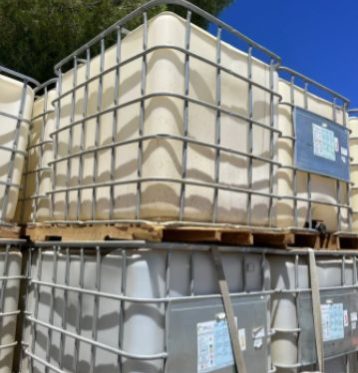
“Contamination of honey and different sugar solutions with HMF has been extensively investigated. LeBlanc et al. (2009) found HMF concentrations of commercially available HFCS of different brands ranging between 3.1 and 28.7 ppm HMF for fresh syrups. They also analyzed the formation of HMF in several samples of HFCS under different temperature conditions. Results showed that constant high temperatures can cause high levels of HMF, especially in acid-catalyzed HFCS. For example, a temperature of 49ºC (120.2ºF) can cause a formation of more than 200 ppm HMF over a period of 36 days. Some samples exposed to 69ºC (156.2ºF) for the same time amounted to HMF values higher than 30,000 ppm HMF. Ruiz-Matute et al. (2010) found HMF concentrations ranging from 26.9 to 102.3 ppm in samples of HFCS. Samples supplied by manufactures showed lower HMF levels than those supplied by beekeepers. Suggesting the former were fresh and properly stored. The syrup samples containing the highest concentrations of HMF were stored in metal tanks, standing outside unprotected from sunlight, and hence, were likely exposed to high temperatures, especially during the Summer months.”
Collison, Clarence. “A Closer Look: Feeding Sugar Syrup/HMI”, Bee Culture, March 23, 2016
Basically, the above research is saying these syrups were sold not by the manufacturers but through resellers, not sold in its original packaging, not stored properly by resellers/beekeepers, and became contaminated with HMF. This is not how the manufacturer sells and stores their product… they know better but they don’t seem to care about educating their beekeepers and resellers either. Many dealers/resellers of these products are guilty of improper storage, however, they are allowed to continue to distribute. This could be a combination of manufactures’ inability to educate their dealers, turning a blind eye, etc. Also, state regulations are highly underregulated in a lot of states when it comes to honey bee health. That’s a whole other topic.
Signs of off-spec syrup
It’s important to ask questions about the products you’re feeding your bees. It’s equally important that the seller is knowledgeable and honest about the product they are selling. Testing for HMF is difficult for the average beekeeper, requires lab equipment, and can be costly. But sometimes there are red flags.
Warning signs:
- “Bring your own bucket” – you know the product is not in its manufactured packaging and potentially not stored properly. If you are coming to fill your own bucket and it’s from a tote that’s been sitting outside exposed to the sun, walk away.
- Social Media Pics – Maybe they show pics on social media of the syrup in IBC totes and maybe those totes are outside… red flag… don’t buy. Even the transportation of the broken down syrup from the manufacturer should be taken seriously and climate controlled. Once HMF levels rise, they never decrease.
- Labeling & Permits – State laws differ when it comes to labeling requirements of animal feed, however, most require that any animal feed product that is resold/distributed have an affixed label to the container or when commercial feed is distributed in bulk, the label accompanies the product. If the seller is unable to provide this, walk away.

Again, states differ when it comes to permitting, however almost all states require a person distributing animal feed to have a permit. This is to ensure they are hopefully abiding by the manufacturer’s quality and safety requirements for that product. If a seller is manufacturing a product this usually requires a different manufacturing permit. Ask to see the seller’s permit to ensure they are abiding by the state and manufacturing requirements.
Without seeing the manufacturer’s label or a seller’s animal feed permit, you really have no idea what you’re buying and feeding to your bees.
If the syrup has already been broken down and not in its original, manufactured packaging; ask questions about how the syrup was stored and broken down. If possible, ask to see where the larger quantities were stored before it was broken down.
- Discolored or bitter tasting syrup – This is not always a clear indication and depends on the type of syrup; however, if the syrup is caramel-colored or bitter tasting, the syrup could potentially contain high HMF.
This practice of selling off-spec syrup is nothing new and seems to always resurface. There are many stories running around the internet of off-spec syrup being sold to unassuming beekeepers and the syrup kills bees. Dr. Rob Currie gave a presentation, “The Importance of Quality Feed for Honey Bees”, where Dr. Currie recounts some of these issues which occurred in Canada and discusses in more detail the dangers of HMF to honey bees.
There are many unscrupulous, greedy sellers out there. There will always be con men and charlatans trying to make a buck but the bee industry seems to attract these types of people. The bee industry has been infested with them for decades, however, recently they are growing in numbers like varroa mites. Bottomline: if sellers are storing the syrup incorrectly and have no clue (or care) of the repercussions of HMF, then they have no business selling bee products. Unfortunately, if the seller knows about the dangers of HMF and they are storing syrup improperly, they will have excuses around it. Con artist sellers can tap dance well. With all the stressors and problems honey bees already have, it’s a shame that they also have to deal with people trying to make money. Welcome to the commercial side of the bee industry!
There are reasons why the syrup is cheap and it isn’t out of the kindness of sellers’ hearts. HMF contamination in honey bee foods has been researched greatly. However, how much damage HMF tainted bee foods affect the entire colony and their winter survival rates is still debated. Don’t cut corners when it comes to bee food. It’s smarter and safer to just buy syrups straight from the manufacturer in its original packaging. Or better yet, make your own supplements. Then you know exactly what the ingredients are!

